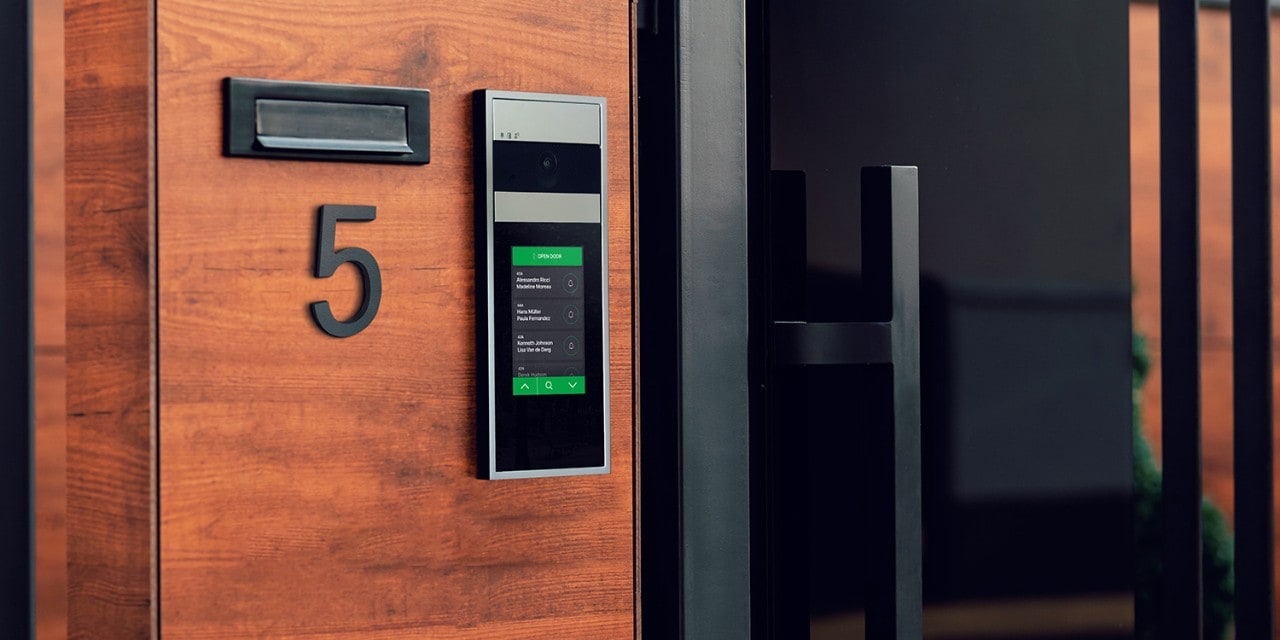- Over klanten
- Comelit Group
Comelit Group achieved this using • SAS® Analytics powered by SAS® Viya® 4 on Google Cloud
Industrial company Comelit Group harnesses the power of SAS® Viya® 4 to modernize how decisions are made, combining the most successful analytics and AI platform with the flexibility and scalability of the cloud
When it comes to home and commercial building security, Comelit Group is an expert. An international leader in the security and smart building market, Comelit designs and manufactures products such as smart doorbells, video surveillance equipment, anti-intrusion systems and fire protection systems to help safeguard buildings around the world, from private residences to hotels and hospitals to schools and skyscrapers. Just as Comelit uses advanced technology to protect its customers, the manufacturer uses the most advanced analytics to run its business.
With more than 800 employees and six R&D centers across Europe, Asia, the Middle East and the US, Comelit exports to more than 90 countries worldwide. When other video door entry systems were still analog, Comelit became the first in Europe to apply digital technology. “With You Always” is both motto and mission for this company, which uses SAS Analytics to make the best use of data for intelligent business decisions.
Read on as Comelit’s COO Renato Ferraresi and CIO Gianantonio Carli share insights into how the company uses analytics to manage business complexity and unleash further innovation.
SAS Viya represents the pivot of our transformation, connecting the value between data and knowledge, so we can make business decisions with greater objectivity.Renato Ferraresi COO Comelit Group
How do technologies enable and support your business transformation?
Ferraresi: Comelit designs new technological solutions for video door-entry systems, video surveillance, burglar alarms, home automation, access control and fire prevention. Recent acquisitions have contributed to further growth and expansion of the company, triggering new organizational and IT challenges. The more complex the business becomes, the more supporting technologies and increasingly digitized processes are needed.
Such complexity makes it critical to be able to read big data. Our transformation journey has been about modernizing our analytics. In just a few years we have gone from the historic SAS platform on-premises to the most modern version of SAS in the cloud. With SAS Viya 4 on Google Cloud, we’re able to take advantage of the full potential of the cloud along with modern machine learning and artificial intelligence (AI) technologies.
What value do you place on analytics?
Carli: We started using SAS solutions more than a dozen years ago, around 2009-2010, to acquire better business intelligence. We wanted a solution that would allow us to analyze and make the most of the data we had available to provide useful reports with insights for our business decision-makers throughout the company, from R&D to top management.
We still use many reporting models today. Over time we have greatly expanded not only the ways in which we use SAS Analytics but also the business user base that benefits from it. It’s an evolution that also meant a technological transformation. We have modernized the systems, focusing first on SAS Viya 3.5 and then on SAS Viya 4 to expand the use of the platform and its potential for business.
Today, the SAS Viya platform is the technological heart of our finance department, harnessing the power of data analysis for both administration and management control.
As our business continues to expand and new challenges emerge, how and why we use data also changes. Today we are looking at analytics with a further impetus for innovation. For instance, we’re using analytics no longer just for reporting based on historical data, but also for improving decisions and decision-making processes through simulations and predictive analytics. This applies the full potential of the cloud and machine learning, and it’s why we moved from the on-prem solution to the cloud and the latest Viya 4 platform.
This modernization has followed the natural evolution of the business. As Ferraresi mentioned, the more complex the business becomes, the more IT and analytics must transform, modernize and evolve to deliver value and effective results.
We’re using analytics no longer just for reporting based on historical data, but also for improving decisions and decision-making processes through simulations and predictive analytics. This applies the full potential of the cloud and machine learning, and it’s why we moved from the on-prem solution to the cloud and the latest Viya 4 platform.Gianantonio Carli CIO Comelit Group
Who is using data analytics and how? What benefits is this path of change bringing you?
Carli: Everything related to data governance and analytics is the domain of IT, including the sources, preparation, quality and availability of data in different information systems. The business is constantly growing and expanding, and with it grows the data and the complexity associated with it. For all management to have clear and consistent data, there must be rigorous control and governance by IT.
In line with our transformation path, we are beginning to broaden the pool of users who can take advantage, autonomously, of SAS’ analysis capabilities. This is a governed autonomy, subject to the behind-the-scenes rigor of IT, which must maintain control over data quality.
Ferraresi: Today, the board can always have a clear view of where the company is going and can make use of reporting at any time, from anywhere. This is also true for other areas including R&D, production, sales and marketing.
Being able to see the data and have the reporting accessible in an easy and agile way is the most valuable element. That’s because data powers the business engine and the company’s innovation. But if we don’t turn data into useful insights for making better decisions, it is of little use.
SAS Viya represents the pivot of our transformation, connecting the value between data and knowledge, so we can make business decisions with greater objectivity.
Comelit Group – Facts & Figures
Italy
headquarters
6
R&D centers
800+
employees
Your transformation journey started from a data culture already present in the company. That culture then matured further with technologies for analyzing data and obtaining insights useful for decision-making, triggering a virtuous cycle of change. Where will it take you in the future?
Carli: The virtuous circle of transformation is already leading us to further expand the use of analytics into predictive analytics. Rather than just making business forecasts based on historical data, we can move into more extended and valuable analytics for the business, based on predictive models. Those models can help us have a more detailed and objective understanding of possible future scenarios.
All of this is to make more informed, more objective decisions to guide our ongoing innovation journey, which is in our company’s DNA. IT must best support that journey through the right technology choices.
You've talked a lot about innovation. What does curiosity mean to you, and how do you relate it to innovation?
Ferraresi: Curiosity is the key ingredient for innovation. To stay in step in a world that runs faster than the human ability to adapt to change, you need a strong ability to innovate. But without curiosity, we risk standing still. Curiosity is the drive that leads one to ask questions and seek answers, which fuels innovation.
Carli: I agree with Ferraresi’s view. Curiosity allows one to question already-acquired knowledge. To innovate you need to ask a lot of questions and try to see things from multiple angles and different perspectives. The ability to do that comes precisely from curiosity.




